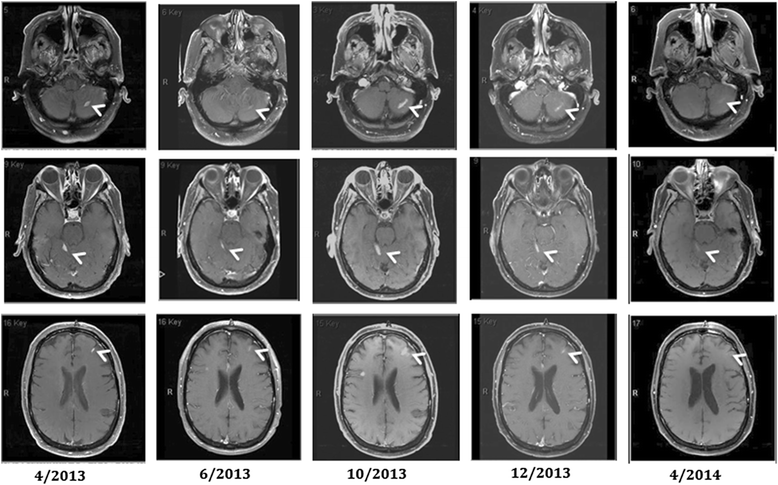Prolonged survival of a patient with metastatic leptomeningeal melanoma treated with BRAF inhibition-based therapy: a case report
- PMID: 25962795
- PMCID: PMC4440312
- DOI: 10.1186/s12885-015-1391-x
Prolonged survival of a patient with metastatic leptomeningeal melanoma treated with BRAF inhibition-based therapy: a case report
Abstract
Background: Leptomeningeal metastasis of melanoma is a devastating complication with a grave prognosis, and there are no known effective standard treatments. Although selective BRAF inhibitors have demonstrated a significant clinical activity in patients with metastatic melanoma harboring a BRAF mutation, the clinical benefit of BRAF inhibitor-based therapy in leptomeningeal disease is not clear.
Case presentation: We present a case of prolonged survival of a patient with BRAF V600E-mutant leptomeningeal disease who was treated with vemurafenib followed by whole brain radiation and a combination of dabrafenib and trametinib. Both vemurafenib and the sequential treatment of radiation and dabrafenib/trametinib led to regression of the leptomeningeal disease, and the patient survived for 19 months after the diagnosis of the leptomeningeal disease.
Conclusion: This case suggests a possible clinically meaningful benefit of BRAF inhibitor-based therapy and a need for close investigation of this therapeutic approach in patients with this devastating disease.
Figures

References
Publication types
MeSH terms
Substances
LinkOut - more resources
Full Text Sources
Other Literature Sources
Medical
Research Materials

